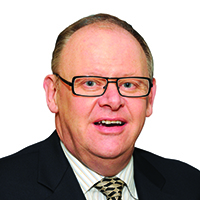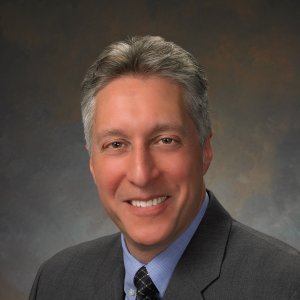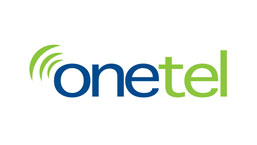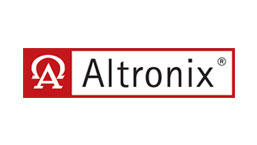TMA Annual Meeting 2017 Keynote Speaker Jack Uldrich Will Share Insights on “Future-Proofing” with Industry Leaders
Scottsdale, October 7-11, is “First” Annual Meeting of Newly-Renamed The Monitoring Association
 The first official annual meeting of the newly-named The Monitoring Association (TMA) will build on the previous successful meetings of the Central Station Alarm Association, bringing value to attendees through high-level sessions on technology advancements and business management, along with the networking opportunities for which the event is renowned.
The first official annual meeting of the newly-named The Monitoring Association (TMA) will build on the previous successful meetings of the Central Station Alarm Association, bringing value to attendees through high-level sessions on technology advancements and business management, along with the networking opportunities for which the event is renowned.
“Over the past several years, we have ‘reimagined’ our annual meeting to provide participants with the kind of value in both content and engagement that is unmatched at any other industry event,” said TMA President Pam Petrow. “2017 will build on our past successes – we’ll present a program of the kind of top-level engagement and professional development that our members have come to expect from our Annual Meeting, while we celebrate our new name and our mission to advance the professional monitoring industry.”
“The annual meeting was exceptional [in 2016],” said Wes Usie, President, Guardian Alarm. “The meeting content, speakers and social networking events were fantastic! I came away with a lot of useful information that will help my business.”
The 2017 TMA Annual Meeting will be held in Scottsdale, AZ October 7-11 at the five-star Fairmont Scottsdale Princess. The Sonoran Desert location and event schedule allow for focused professional development and networking in a spectacular natural setting. “The Annual Meeting keeps getting better every year,” said Morgan Hertel, Vice President, Rapid Response. “And the ‘onshore’ location makes it easy to attend.”
 To launch the forward-thinking education program October 9, TMA welcomes keynote speaker Jack Uldrich, a well-recognized global futurist, speaker, and author of eleven books. He is a frequent speaker on emerging technology, change management and leadership and has addressed hundreds of corporations, associations and not-for-profit organizations on five continents.
To launch the forward-thinking education program October 9, TMA welcomes keynote speaker Jack Uldrich, a well-recognized global futurist, speaker, and author of eleven books. He is a frequent speaker on emerging technology, change management and leadership and has addressed hundreds of corporations, associations and not-for-profit organizations on five continents.
“In the near future, the greatest change will be the accelerating rate of change itself,” said UIdrich. He will present an enlightening, entertaining and educational session, sharing insights from his forthcoming book, Business as Unusual: How to Future-Proof Yourself Against Tomorrow’s Transformational Trends, Today. “I’ll outline the trends transforming the world of tomorrow, as well as identify concrete actions business leaders can take today to future-proof themselves and their companies against ‘the tides of tomorrow,’” he added. The session is generously sponsored by Honeywell.
Uldrich is a frequent guest on national media and regularly appears on the Science Channel’s ”FutureScape” and the Discovery Channel’s ”Inside Out.” He is an ongoing contributor on emerging technologies and future trends for a number of publications, including The Wall Street Journal, Forbes, Wired Magazine and BusinessWeek. A former naval intelligence officer and Defense Department official, he served as the director of the Minnesota Office of Strategic and Long-Range Planning under Minnesota Governor Jesse Ventura.
Additional education sessions (October 9-11) at the Annual Meeting will focus on helping leaders address critical issues and challenges facing the monitoring industry, such as best practices in operations, executive management, technology updates, and telecomm issues. The complete roster of speakers will be announced over the summer. TMA will hold Board of Directors and Committee meetings October 7-8.
To see the preliminary schedule, register, and reserve hotel rooms for the TMA Annual Meeting, visit tma.us/2017am. The Fairmont Scottsdale Princess is approximately a 30-minute drive from Phoenix Sky Harbor International Airport.


 VIENNA, VA (March 16, 2017) – The Monitoring Association (TMA) is the new name of the 67-year-old Central Station Alarm Association. The name change reflects an adjustment in mission and focus necessitated by growth and changes in the alarm monitoring industry.
VIENNA, VA (March 16, 2017) – The Monitoring Association (TMA) is the new name of the 67-year-old Central Station Alarm Association. The name change reflects an adjustment in mission and focus necessitated by growth and changes in the alarm monitoring industry. g these reviews Chair Rick Sheets has collaborated with ESA Government Relations and CSAA members to gain insight on the effect these bills have on our industry.
g these reviews Chair Rick Sheets has collaborated with ESA Government Relations and CSAA members to gain insight on the effect these bills have on our industry. CSAA announced that Nigel Spinks is the new chair of the Associate Members’ Liaison Committee. In his new role he will represent Associate Members on the CSAA Board of Directors. This committee advises the Board of the needs and concerns of Associate Members, and it provides input to the Membership and Education committees on their outreach and other projects. The committee has begun working on a universal billing template and TMA event promotion, among other initiatives.
CSAA announced that Nigel Spinks is the new chair of the Associate Members’ Liaison Committee. In his new role he will represent Associate Members on the CSAA Board of Directors. This committee advises the Board of the needs and concerns of Associate Members, and it provides input to the Membership and Education committees on their outreach and other projects. The committee has begun working on a universal billing template and TMA event promotion, among other initiatives.

 le and Minimum Wage Increases on Your Business” at the 2016 CSAA Annual Meeting and is a contributor to CSAA Dispatch.
le and Minimum Wage Increases on Your Business” at the 2016 CSAA Annual Meeting and is a contributor to CSAA Dispatch.






